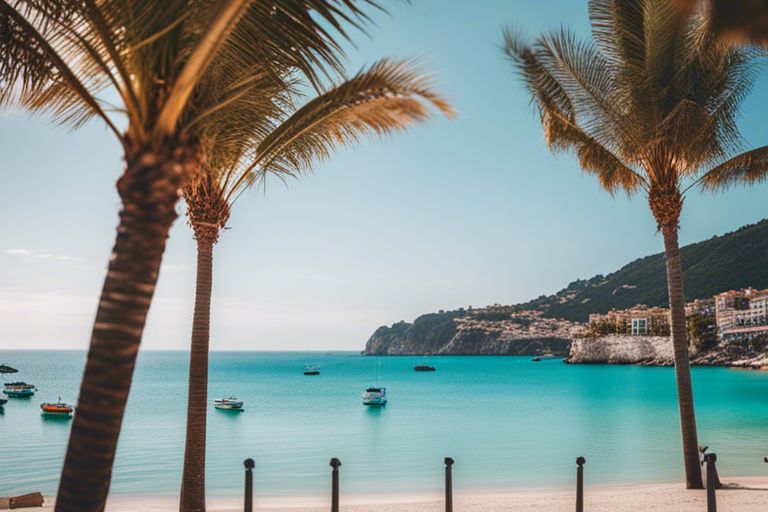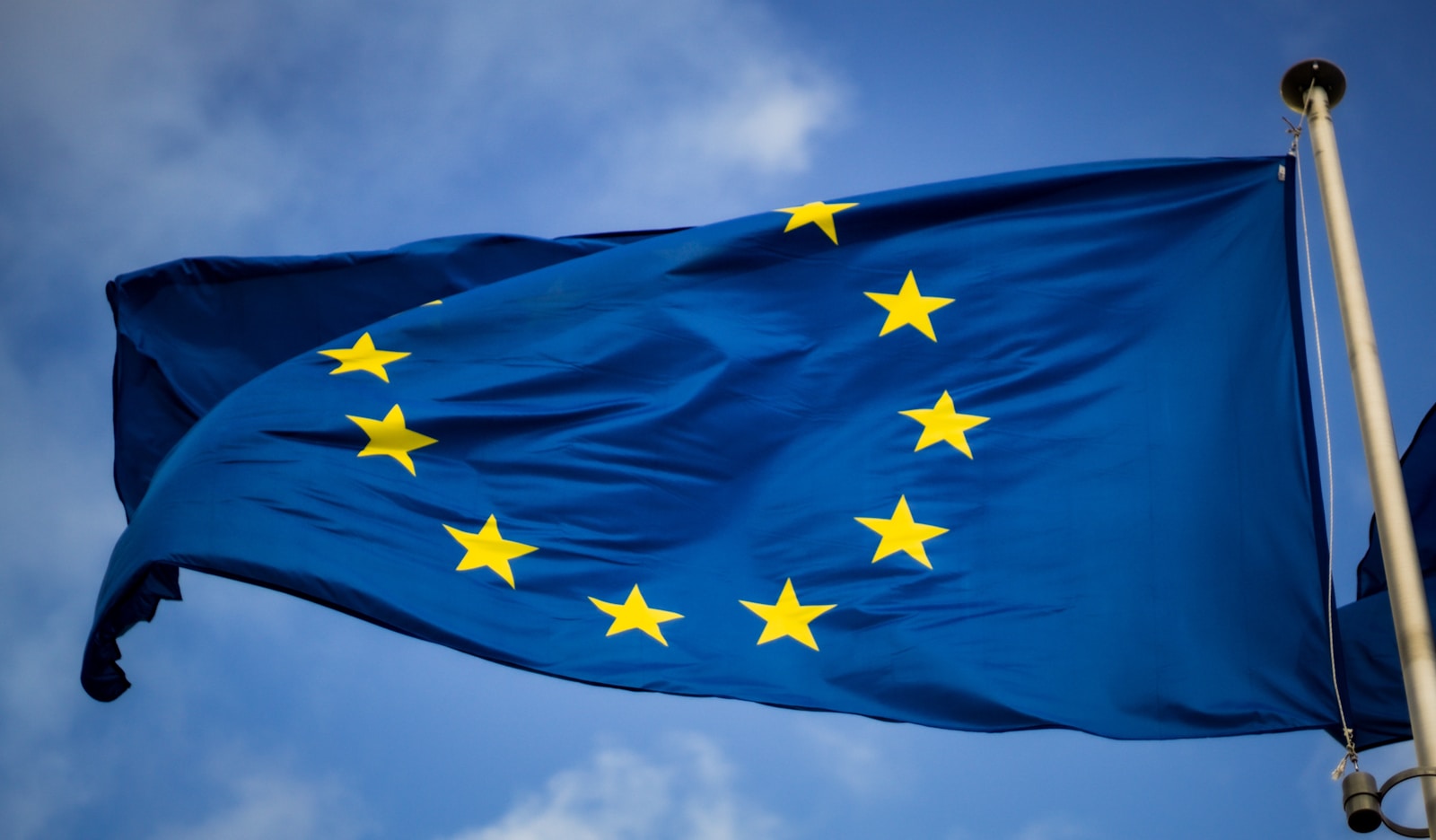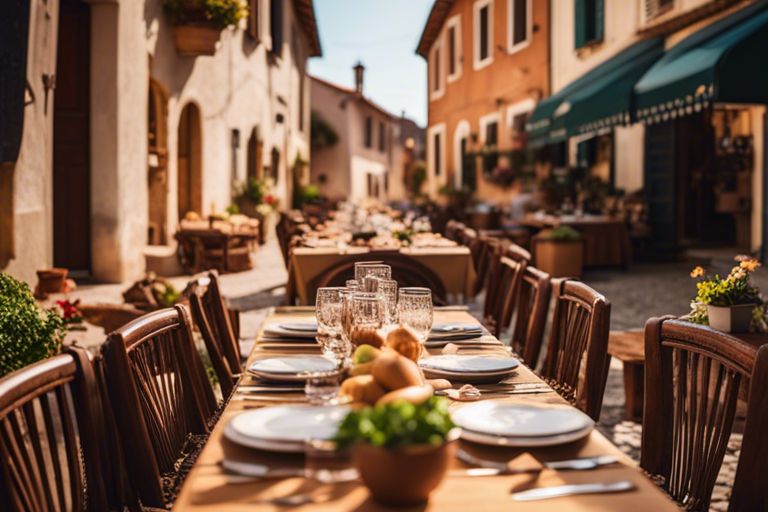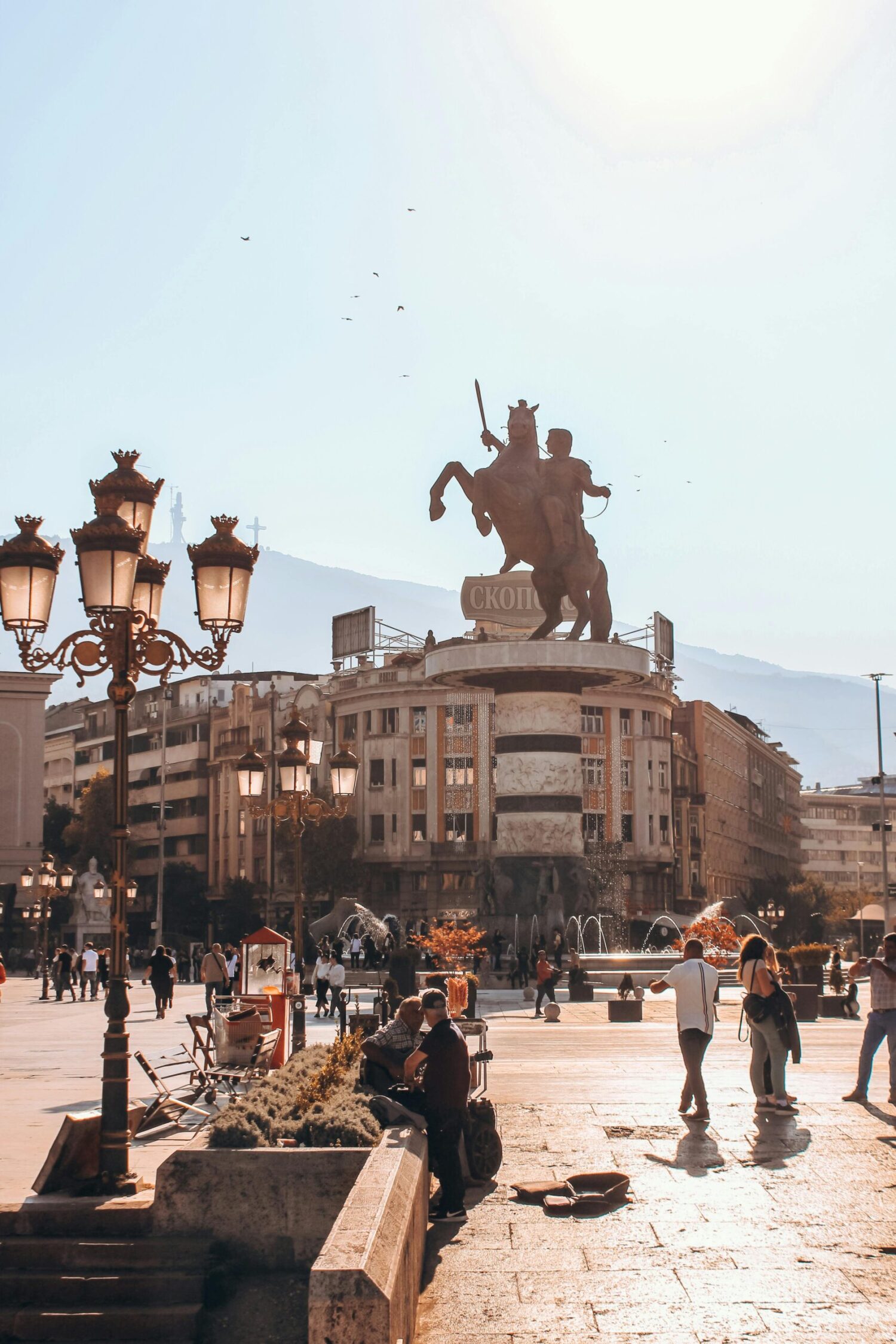Just imagine yourself basking in the golden sun on a sandy beach with the crystal-clear waters of the Mediterranean gently lapping at your feet. In this guide, we will whisk you away on a journey to the most picturesque coastal destinations in Europe for your summer escape. From the vibrant shores of the French Riviera to the hidden gems of the Greek Islands, get ready to pack your bags and experience the ultimate beach getaway in Europe.
Why Europe for a Beach Escape?
Rich History and Culture
Before you launch on your European beach escape, consider the rich history and culture that awaits you. Europe is a continent steeped in centuries of fascinating stories and traditions, evident in its charming coastal towns and ancient ruins. Imagine lounging on the sun-kissed beaches of the Mediterranean, with the remnants of a Roman villa just a stone’s throw away. From the majestic castles of Portugal to the picturesque villages of Greece, every corner of Europe offers a cultural tapestry waiting to be explored.
When you choose Europe for your beach getaway, you not only soak up the sun but also immerse yourself in a world of art, music, and gastronomy. Stroll along the cobblestone streets of Dubrovnik, where Game of Thrones was filmed, or savor freshly caught seafood in a traditional Spanish tavern. The blend of old-world charm and modern amenities makes European beach destinations a perfect choice for those seeking a well-rounded vacation experience.
As you relax on the sandy shores of Europe, take a moment to marvel at the architectural marvels that surround you. Whether it’s the iconic white-washed buildings of Santorini or the regal palaces of the French Riviera, each destination has a story to tell. By choosing Europe for your beach escape, you not only rejuvenate your body but also enrich your mind with the vibrant history and culture of this diverse continent.
Diverse Landscapes and Climates
For an unforgettable beach escape, Europe offers a plethora of diverse landscapes and climates to suit every traveler’s preference. From the rugged cliffs of the British Isles to the golden sands of the Algarve, you can explore a variety of stunning backdrops during your coastal retreat. The azure waters of the Adriatic Sea beckon to swimmers and snorkelers alike, while the lush forests of Scandinavia offer a tranquil escape for nature lovers.
For instance, you can bask in the glorious Mediterranean sunshine in destinations like the French Riviera or Amalfi Coast, where the climate is warm and inviting. Alternatively, you can seek refuge from the heat in the cool, refreshing waters of the Baltic Sea or the North Sea. Whether you prefer a relaxing beach vacation or an active outdoor adventure, Europe’s diverse landscapes ensure that there’s something for everyone.
With Europe’s geographical variety, you can easily hop from one type of beach environment to another, experiencing a range of climates and scenery in a single trip. The convenience of traveling between countries allows you to explore different coastal regions without lengthy journeys, making Europe an ideal choice for those seeking a dynamic and varied beach escape.
Mediterranean Beach Getaways
It seems you are dreaming of the idyllic beaches of the Mediterranean! The Greek Islands are a perfect choice for a picturesque summer escape.
Greek Islands: Mykonos, Santorini, and Crete
One cannot resist the charm of the Greek Islands. **Mykonos** will captivate you with its vibrant nightlife and stunning beaches. Stroll through the narrow streets filled with white-washed buildings adorned with vibrant bougainvillea. **Santorini** will steal your heart with its iconic blue-domed churches overlooking the Aegean Sea. Witness breathtaking sunsets while savoring local delicacies at cliffside restaurants. **Crete**, the largest of the Greek Islands, offers a blend of rich history, beautiful beaches, and rugged landscapes. Explore ancient ruins, relax on pristine beaches, or hike the Samaria Gorge for an unforgettable experience.
Spanish Coast: Costa Brava, Costa del Sol, and Ibiza
Costa Brava, Costa del Sol, and Ibiza await your visit on the vibrant Spanish Coast. **Costa Brava** is known for its rugged coastline, picturesque coves, and quaint fishing villages. Explore the medieval town of Tossa de Mar, soak up the sun on the beaches of Lloret de Mar, or hike the Camino de Ronda for panoramic views. **Costa del Sol** offers you a taste of luxury with upscale resorts, sandy beaches, and crystal-clear waters. Indulge in fresh seafood, play a round of golf, or visit the charming town of Marbella. **Ibiza**, famous for its electrifying nightlife, also boasts tranquil beaches and a bohemian vibe. Explore the historic Old Town, unwind on the sandy shores of Cala Bassa, or dance the night away at world-renowned clubs.
The Spanish Coast offers a perfect mix of relaxation and excitement, catering to every type of traveler. Whether you seek **serene beaches** or **vibrant nightlife**, you’ll find it all on the stunning coastline of Spain. Embrace the laid-back Mediterranean lifestyle, savor delicious cuisine, and create lasting memories on your beach getaway.
French Riviera: Glamour and Sophistication
You have heard of the French Riviera – the epitome of glamour and sophistication. This stretch of coastline in the south of France has long been a playground for the rich and famous, attracting visitors with its stunning beaches, luxurious resorts, and vibrant nightlife.
Saint-Tropez: Yachts and Celebrity Spotting
With its picturesque harbor filled with yachts and designer boutiques lining the streets, Saint-Tropez is the place to see and be seen. This glamorous town has been a magnet for celebrities and high-rollers for decades, offering a mix of luxury and laid-back charm. Spend your days lounging on the sandy beaches or sipping cocktails at chic beach clubs, and you might just spot a famous face or two.
At night, the town comes alive with exclusive parties and high-end restaurants where you can dine like royalty. Don’t forget to explore the historic Old Town with its charming cobblestone streets and pastel-colored houses, offering a glimpse into Saint-Tropez’s rich history beyond the glitz and glamour.
Whether you’re looking to soak up the sun in style or rub shoulders with the elite, Saint-Tropez is the perfect destination for a taste of the high life on the French Riviera.
Cannes: Film Festival and Luxury Hotels
Any film buff or luxury traveler will feel right at home in Cannes, the epicenter of the film industry and home to some of the most luxurious hotels on the French Riviera. During the world-famous Cannes Film Festival, the city transforms into a glamorous extravaganza, with movie stars and directors descending upon the town for premieres and parties.
French cuisine, designer shopping, and sun-kissed beaches await you in Cannes, making it a destination that offers the perfect blend of glamour and relaxation. Whether you’re strolling along the Promenade de la Croisette or exploring the charming Old Town, Cannes has something to offer every type of traveler.
Italian Coastal Charm
Now, let’s explore the enchanting coastal regions of Italy, known for their stunning landscapes, rich culture, and delicious cuisine. Whether you’re seeking glamorous beach resorts or quaint fishing villages, Italy offers a diverse range of options for a perfect summer getaway. From the glamorous Amalfi Coast to the colorful Cinque Terre, you’ll find it all in this Mediterranean paradise.
Amalfi Coast: Positano, Amalfi, and Ravello
An Amalfi Coast experience is a must on any Italian coastal itinerary. The trio of picturesque towns – Positano, Amalfi, and Ravello – each offers its own unique charm. **Positano**, with its pastel-colored houses tumbling down the cliffside to the sparkling sea, is a sight to behold. **Amalfi** boasts a stunning cathedral and a vibrant piazza, while **Ravello** is known for its breathtaking views and elegant gardens. The narrow, winding coastal roads offer dramatic vistas at every turn, making this region a favorite for road trips and romantic getaways.
Cinque Terre: Hiking and Scenic Views
To truly immerse yourself in the beauty of the Italian coastline, head to the **Cinque Terre** region. This collection of five colorful fishing villages perched on rugged cliffs is a UNESCO World Heritage site and a hiker’s paradise. You can explore the network of scenic trails that connect the villages, offering spectacular views of the Mediterranean Sea and the surrounding vineyards. The azure waters, pastel buildings, and terraced hillsides make Cinque Terre a photographer’s dream come true.
If you’re an outdoor enthusiast, you’ll love the hiking opportunities in Cinque Terre. The trails vary in difficulty, so whether you’re a seasoned hiker or a casual stroller, there’s something for everyone. Be sure to pack comfortable shoes, plenty of water, and your camera to capture the stunning vistas along the way. Don’t forget to sample the local seafood and pesto, made from the region’s famous basil, for a true taste of Cinque Terre.
British Isles: Hidden Gems
Unlike the bustling beaches of southern Europe, the British Isles offer a unique charm with their rugged coastlines, rich history, and stunning natural landscapes. If you’re looking for a more off-the-beaten-path beach escape, consider exploring these hidden gems in the British Isles.
Cornwall, England: Surfers’ Paradise
Paradise for surfers, Cornwall in England is known for its picturesque beaches, vibrant villages, and excellent waves that attract surfers from around the world. Whether you’re a seasoned pro or a beginner looking to catch your first wave, Cornwall offers a variety of surf spots for all levels. You can also explore the charming seaside towns, indulge in fresh seafood, and take in the dramatic cliffs and sandy coves that make this region a true coastal paradise.
Isle of Skye, Scotland: Dramatic Landscapes
Isles of Skye in Scotland are renowned for their dramatic landscapes, steep cliffs, and rugged terrain that will take your breath away. **Another** highlight of the Isle of Skye is the mystical Fairy Pools, a series of crystal-clear blue pools and waterfalls set against the backdrop of the Cuillin mountains. **Strong**If you’re up for an adventure, you can trek through the surreal Fairy Glen or visit the iconic Old Man of Storr rock formation. Witnessing the ever-changing weather and light play on the stunning landscapes of the Isle of Skye is an experience you won’t soon forget.
Portuguese Beaches: Golden Sands and Rich History
Despite the allure of beaches across Europe, Portugal stands out for its unique combination of golden sands and rich history. According to The best beach holidays in Europe for summer 2024, Portuguese beaches have been a perennial favorite among travelers looking for a mix of relaxation and cultural exploration.
Algarve: Golfing and Family-Friendly Resorts
Portuguese beaches, particularly along the Algarve coast, offer something for everyone. The Algarve is known for its stunning cliffs, pristine sandy beaches, and warm waters, making it an ideal destination for water sports enthusiasts and sun-seekers alike. If you’re a golf enthusiast, you’ll also find world-class golf courses scattered along the coast, offering breathtaking views as you tee off. Additionally, the Algarve boasts a range of family-friendly resorts, ensuring that both adults and children can enjoy a memorable beach vacation.
Lisbon Coast: Cascais and Estoril
An exploration of the Lisbon Coast, specifically the towns of Cascais and Estoril, will introduce you to a different side of Portuguese beach culture. These charming coastal towns are known for their elegant promenades, inviting cafes, and glamorous beaches. While Cascais exudes a laid-back vibe with its sandy coves and picturesque marina, Estoril offers a more upscale experience with its historic casino and luxurious resorts. Whether you’re looking to relax on the beach or immerse yourself in the local history, the Lisbon Coast has something to offer every type of traveler.
Understanding the nuances of each Portuguese coastal destination will enrich your beach holiday experience. Whether you choose the Algarve for its diverse attractions or the Lisbon Coast for its unique charm, you’re sure to be captivated by the golden sands and rich history that define Portugal’s beach escapes.
Croatian Islands: Unspoiled Nature
To discover the unspoiled beauty of the Croatian Islands, head to the Dalmatian coast in the Adriatic Sea. According to 11 of the Best Beaches in Europe for a Coastal Escape, Croatia boasts some of the most breathtaking coastal destinations in Europe. The Croatian Islands are known for their crystal-clear waters, secluded coves, and pristine beaches, making them the perfect escape for nature lovers seeking tranquility.
Hvar: Lavender Fields and Luxury Villas
Lavender-scented breezes waft through the air as you wander through the lush fields of purple blooms on the island of Hvar. This enchanting island is not only famous for its fragrant lavender fields but also for its luxurious villas and upscale resorts. **Immerse** yourself in the opulence of Hvar as you relax on the sun-kissed beaches or explore the charming streets of Hvar Town. With its mix of natural beauty and high-end amenities, **Hvar** offers a perfect blend of relaxation and indulgence.
Brač: Zlatni Rat Beach and Water Sports
Water enthusiasts, rejoice! The island of Brač is home to the famous Zlatni Rat Beach, a **stunning** stretch of golden pebbles jutting out into the azure sea. Here, you can **participate** in a variety of water sports, from windsurfing to paddleboarding, or simply bask in the sun and watch the sailboats drift by. Brač is a paradise for **adventure** seekers and beach lovers alike, offering a perfect combination of excitement and relaxation.
Zlatni Rat Beach, also known as the Golden Horn, is not only a picturesque spot for sunbathing and swimming but also a haven for adrenaline junkies looking to **explore** the underwater world through snorkeling and diving. The unique shape of the beach, constantly changing with the tides, adds to its allure, making it a must-visit destination for **nature** enthusiasts and thrill-seekers.
German and Dutch Coastlines
For a unique beach escape in Europe, look no further than the German and Dutch coastlines. Both countries offer a blend of stunning beaches, charming seaside towns, and outdoor activities that cater to every type of traveler.
Sylt, Germany: Windsurfing and Seaside Resorts
Resorts nestled along the coastline of Sylt, Germany, offer a perfect blend of relaxation and adventure. Known for its **windsurfing** opportunities, Sylt is a haven for water sports enthusiasts. The island boasts **pristine sandy beaches and clear waters**, making it an ideal destination for those looking to unwind by the sea. After a day of **windsurfing** or sunbathing, you can explore the quaint villages with their traditional thatched-roof houses and indulge in fresh seafood at local restaurants.
For **luxury seekers**, Sylt offers upscale seaside resorts that provide top-notch amenities and stunning views of the North Sea. Imagine waking up to the sound of **waves crashing** and enjoying a leisurely breakfast on your private balcony overlooking the sea. Whether you prefer **relaxing spa treatments** or **adventurous water sports**, Sylt caters to all your vacation desires.
Don’t miss the chance to witness the **dramatic sunsets** that paint the sky in a myriad of colors, creating a mesmerizing backdrop for your evening strolls along the beach. Sylt’s unique charm and diverse activities make it a must-visit destination on the German coastline.
Wadden Sea, Netherlands: Nature Reserves and Cycling
Netherlands’ Wadden Sea is a UNESCO World Heritage Site renowned for its **breathtaking natural beauty** and unique ecosystem. The coastal region is dotted with **charming villages**, nature reserves, and cycling routes, making it a paradise for nature lovers and outdoor enthusiasts. You can explore the **mudflats** on guided tours, observe an array of bird species, or simply cycle along the **picturesque paths** that offer stunning views of the coastline.
Coastlines along the Wadden Sea are a haven for **birdwatching**, with countless species flocking to the area throughout the year. From **curious seals** to colorful migratory birds, the coastal region is teeming with wildlife waiting to be discovered. Additionally, **cycling routes** meander through scenic landscapes, allowing you to immerse yourself in the tranquility of nature while staying active during your beach getaway.
Scandinavian Beaches: Fjords and Midnight Sun
Many travelers often overlook the Scandinavian countries when considering beach destinations, but they offer a unique coastal experience that shouldn’t be missed. From breathtaking fjords to the mesmerizing phenomenon of the midnight sun, the beaches in Norway, Denmark, and Sweden are truly something special.
Norway: Lofoten Islands and Northern Lights
Fjords cut deep into the rugged coastline of Norway, creating majestic landscapes that seem almost otherworldly. One of the most iconic beach destinations in Norway is the Lofoten Islands, where golden sandy beaches are framed by towering mountains. Imagine the incredible contrast of relaxing on a pristine beach while witnessing the mystical Northern Lights dance across the sky. In this enchanted setting, you can truly feel the magic of the North.
Exploring the beaches of Norway is not only about basking in the beauty of nature but also about experiencing the wonders of the night sky. The Northern Lights are a natural light display that will leave you in awe, painting the sky in vibrant hues of green, purple, and blue. This rare spectacle is a once-in-a-lifetime experience that you won’t soon forget.
Denmark: Bornholm Island and Summer Festivals
With its charming coastal towns and sandy beaches, Denmark offers a more laid-back beach experience. Bornholm Island, located in the Baltic Sea, is renowned for its picturesque beaches and vibrant summer festivals. As you soak up the sun on the sandy shores, you can immerse yourself in the Danish culture and enjoy live music, local cuisine, and traditional folk dancing.
If you’re looking for a beach escape with a cultural twist, Bornholm Island is the perfect destination. The summer festivals offer a lively atmosphere where you can mingle with locals and partake in traditional celebrations. From music concerts to food markets, there’s always something exciting happening on the beaches of Denmark.
Eastern European Surprises
Not all European beach escapes are nestled along the Mediterranean coast. Eastern Europe offers its fair share of hidden gems waiting to be discovered.
Bulgaria: Sunny Beach and Ancient History
Ancient history and stunning beaches collide in Bulgaria, particularly in Sunny Beach. Here, you can soak up the sun on 8 kilometers of golden sand while being surrounded by remnants of a rich historical past. Explore the nearby town of Nessebar, a UNESCO World Heritage Site, where you can wander through thousands of years of history.
For a more active adventure, head to the Balkan Mountains and discover ancient Thracian tombs or roam the ancient fortress at Sozopol. With a blend of history and beach bliss, Bulgaria offers a unique coastal experience for those looking to dig deeper into Europe’s ancient roots.
Experience the best of both worlds in Bulgaria – relax on the sunny beaches during the day, and soak in the intriguing ancient history in the evenings. This destination is perfect for those seeking a balance between beach relaxation and cultural exploration.
Poland: Hel Peninsula and Sailing
Surprises await you on Poland’s Hel Peninsula, a narrow strip of land jutting out into the Baltic Sea. Here, you can enjoy the pristine beaches and partake in exciting water sports activities like sailing and windsurfing. The peninsula is a haven for nature enthusiasts, with protected forests and diverse wildlife to discover.
For instance, you can visit the charming fishing village of Jastarnia and watch the boats dotting the harbor. The peninsula’s unique shape creates a coastline with both sandy beaches and rocky cliffs, offering a variety of landscapes for you to explore.
Poland’s Hel Peninsula showcases the unspoiled beauty of the Baltic coast and provides a tranquil escape from the bustling beach crowds found in other European destinations. If you’re seeking a refreshing coastal retreat with ample opportunities for sailing and relaxation, the Hel Peninsula is a must-visit.
Beach Activities and Water Sports
All along Europe’s stunning coastlines, you’ll find a plethora of beach activities and water sports to enjoy during your summer getaway. Whether you are a thrill-seeker or prefer a more relaxed time by the water, there is something for everyone to enjoy.
Surfing and Windsurfing Hotspots
Water enthusiasts flock to Europe’s top surfing and windsurfing hotspots for the perfect waves and constant breeze. Destinations like Biarritz in France, Peniche in Portugal, and Tarifa in Spain offer ideal conditions for catching the waves or harnessing the wind for an exhilarating windsurfing experience. The rugged coastlines and vibrant beach cultures add to the charm of these popular spots, making them must-visits for surfers and windsurfers alike.
If you’re looking to ride the waves with style, head to Cornwall in the UK or Taghazout in Morocco for some of the best surf breaks in Europe. Whether you’re a beginner or a seasoned pro, these destinations cater to all levels of experience, ensuring a thrilling and memorable surfing or windsurfing holiday.
After a day of riding the waves, relax on the golden sandy beaches, immerse yourself in the local surf culture, and savor delicious seafood at beachfront restaurants. Whether you’re chasing the perfect wave or simply soaking up the laid-back beach vibe, surfing and windsurfing in Europe are experiences not to be missed.
Snorkeling and Scuba Diving in Europe’s Best Spots
Windsurfing enthusiasts will find Europe’s coastal waters equally inviting for snorkeling and scuba diving adventures. The crystal-clear waters of the Mediterranean Sea offer incredible visibility, allowing you to explore vibrant underwater ecosystems teeming with marine life and colorful corals. Destinations like Malta, Croatia, and Greece are renowned for their excellent diving sites, where you can discover ancient shipwrecks, underwater caves, and intricate coral reefs.
Plus, the diverse marine life in Europe’s waters includes colorful fish, octopuses, sea turtles, and even dolphins in some regions. Experienced divers can venture deeper into the depths to encounter larger marine species like groupers, barracudas, and even the occasional shark. With a variety of dive sites catering to both beginners and advanced divers, Europe offers a rich and rewarding underwater world waiting to be explored.
Accommodation and Dining
Keep your European beach escape luxurious and memorable by choosing from a selection of **luxury resorts and boutique hotels** along the coast. From elegant five-star resorts with stunning ocean views to charming boutique hotels nestled in picturesque fishing villages, you can find the perfect accommodation to suit your style and preferences. Indulge in top-notch amenities, personalized service, and unforgettable experiences, making your stay truly exceptional.
Luxury Resorts and Boutique Hotels
Dining at these upscale establishments is a culinary adventure in itself, with gourmet restaurants showcasing the best of European cuisine. **Immerse yourself in gastronomic delights** as you savor freshly caught seafood, locally sourced ingredients, and exquisite flavors prepared by talented chefs. Whether you prefer fine dining with a view of the sunset or a cozy dinner in a quaint courtyard, the dining options at luxury resorts and boutique hotels are sure to impress.
Choose a beachfront suite with a private terrace overlooking the sea, where you can enjoy a delicious breakfast delivered to your room each morning. **Relax in style and comfort** as you unwind in luxurious surroundings, knowing that every meal will be a culinary delight to remember.
Seafood and Local Cuisine: A Gastronomic Journey
Dining in Europe’s coastal destinations is a **gastronomic journey** that should not be missed during your beach escape. **Sample the freshest seafood**, from grilled octopus to traditional paella, and taste the authentic flavors of the region. Explore local markets, seaside tavernas, and hidden gems where you can experience the true essence of European cuisine.
**Immerse yourself in the food culture** of each destination, where culinary traditions have been passed down for generations. **Discover the secret recipes** and culinary techniques that make each dish unique, and savor the unparalleled taste of freshly prepared seafood dishes that will leave you craving for more.
Luxury dining experiences at renowned seafood restaurants and charming eateries will elevate your beach escape to a whole new level. **Indulge in the finest ingredients** and expertly prepared dishes that highlight the rich flavors of the sea and land. Whether you are a seafood aficionado or a lover of local cuisine, your gastronomic journey along the European coast will be a memorable and delicious part of your summer getaway.
Insider Tips and Essentials
Once again, you find yourself craving the sun, sea, and sand of Europe’s stunning coastal destinations. Before you commence on your beach escape, make sure you’re well-prepared with some insider tips and imperatives to make the most of your trip. Here are some key things to keep in mind:
- When planning your trip, remember that the best time to visit these European beach destinations is during the summer months, typically from June to August. This is when you can expect warm temperatures, cloudless skies, and perfect beach weather.
- Before you pack your bags, it’s imperative to check the weather forecast for your chosen destination. This will help you pack appropriate clothing and gear, ensuring you’re prepared for any unexpected changes in weather.
Best Time to Visit and Weather Forecast
One of the most crucial factors to consider when planning your European beach escape is the best time to visit and the weather forecast for your chosen destination. One thing to keep in mind is that the summer months, from June to August, are peak season for beach destinations across Europe. This means that popular beaches can get crowded, and accommodation prices may be higher. However, if you’re looking for vibrant beach atmospheres and plenty of activities, this is the ideal time to visit.
Packing and Traveling with Ease
In terms of packing for your European beach escape, it’s imperative to pack smart and travel with ease. Consider the activities you’ll be doing, whether it’s lounging on the beach, exploring coastal towns, or trying out water sports. Forecast the weather and pack accordingly, with lightweight clothing, swimsuits, sunscreen, a beach towel, and comfortable walking shoes. Don’t forget imperatives like sunglasses, a hat, a reusable water bottle, and a good book to enjoy by the beach.
Plus, remember to pack any necessary travel documents, such as your passport, travel insurance information, and local currency. Knowing what to pack and traveling with ease will ensure that you have a stress-free and enjoyable beach vacation in Europe.1. French Riviera: Glamorous beach resorts and crystal-clear waters.
2. Greek Islands: Charming villages, delicious cuisine, and stunning sunsets.
3. Amalfi Coast: Cliffside towns, historic sites, and turquoise waters.
4. Algarve, Portugal: Sandy beaches, picturesque cliffs, and fresh seafood.
5. Costa Brava, Spain: Hidden coves, vibrant culture, and medieval villages.
6. Croatian Coast: Islands, historic cities, and pristine beaches.
To wrap up
As you dream of your next European beach escape, remember that the continent offers a wide array of coastal destinations waiting to be explored. Whether you are seeking a vibrant party scene in Ibiza, Spain, a peaceful retreat in Algarve, Portugal, or historical charm in Dubrovnik, Croatia, there is a beach destination in Europe that caters to your preferences. From the sandy shores of the French Riviera to the crystal-clear waters of the Greek Islands, each location on the list presents a unique experience that will surely leave you enchanted.
For more inspiration on the best beach destinations in Europe, don’t forget to check out the 20 Best Beach Destinations in Europe article for additional tips and recommendations. Remember to pack your swimsuit, sunscreen, and sense of adventure as you commence on your coastal journey through the diverse and breathtaking landscapes of Europe.
So, whether you are looking to soak up the sun, indulge in local cuisine, or simply relax by the sound of the waves, Europe’s coastal gems have something special in store for every type of traveler. Embrace the idyllic beaches, charming villages, and rich cultural heritage that await you on your next summer getaway to one of the best beach destinations in Europe.














